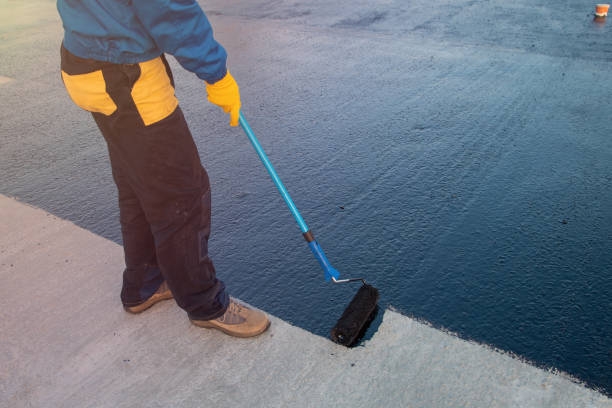Waterproofing is a delicate task that requires multiple steps of prep-work beforehand. For example, waiting for the right weather conditions before carrying out the task can greatly impact the waterproof coating’s effectiveness.
In the case of waterproofing, it is always more advantageous to begin operations when the weather is warm with rising temperatures. If conducted post-rain or during winter, it runs the risk of condensation, causing bubbles in the membrane which are difficult to remedy.
While such conditions are out of the contractor’s control, there are many steps they can take to ensure the effectiveness and longevity of the waterproof coating. Here are 3 steps waterproofing services in Singapore will perform when applying a coating.
1) Thoroughly Clean The Substrate
The first step in the waterproof coating is to remove any unwanted materials or debris that may affect the consistency while applying.
Things such as dust, grease, rust, and paint can be detrimental to the adhesion of the coating and prevent an even spread.
2) Examine The Surface Area’s Condition
After ensuring that the area is cleaned, the next step is to ensure that there are proper water drainage systems in place for the collection and disposal of water. Furthermore, measures should be taken to prevent the obstruction of said drainage systems. Unavoidable leaves and twigs can be accounted for through the installation of leaf guard systems which get prevent clogging.
For balconies that are delimited by wallets instead of drains, contractors can implement through holes in the walls and apply hood molds for proper water flow.
3) Prepare The Surfaces
When considering which waterproofing system is optimal, it is important to factor in the type of surface being treated. There are 3 types of surfaces, all of which have different solutions.
Bituminous membranes
The main concern when applying waterproofing to bituminous membranes is their uneven surfaces. Contractors need to evaluate whether it is possible to locally renovate a problem area or do a complete overhaul and remove the membrane. Depending on whether the surface area has deteriorated, it may be more convenient to perform complete removal.
Concrete Surfaces
For concrete surfaces, contractors will evaluate the presence and depth of possible cortical degradation and then proceed to a concrete renovation cycle.
Contractors will eliminate any metal spaces and treat deep and extended irregularities. They will prime the substrate by using an epoxy resin and then use a leveling mortar to skim coat. This process will be carried out between 8 to 24 hours prior to applying the waterproof coating.
Tiled Surfaces
For tiled surfaces, contractors will remove the first row of tiles of the walls. This is to check the adhesion to the substrate and repair irregularities.
Following the checkup, the next step is to perform acid washing on the surface to remove the residues of cement mortars. Once applied, it will take a few minutes for a complete cleanse before it can be rinsed off using regular water.
Consult A Local Contractor
While this is a general guideline as to what steps a contractor should take when it comes to waterproofing, differing circumstances will change the procedure.
For a better understanding of your own personal waterproofing needs, the best practice is to contact a local contractor for consultation. If you are based in Singapore, Allstar Waterproofing & Service’s website is a great hub of information to answer all your burning questions.
Click here to get a full breakdown of the waterproofing services they offer.
